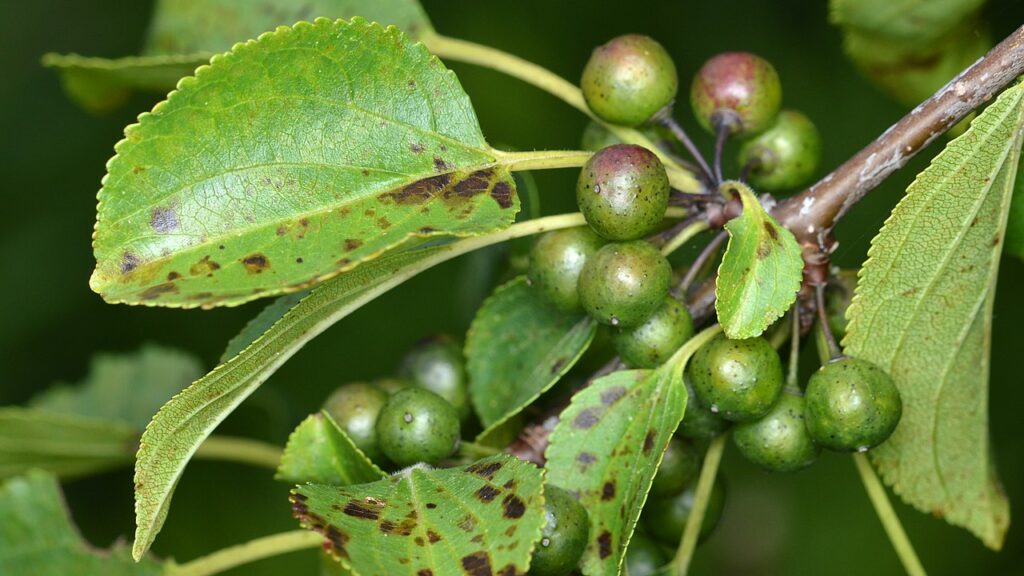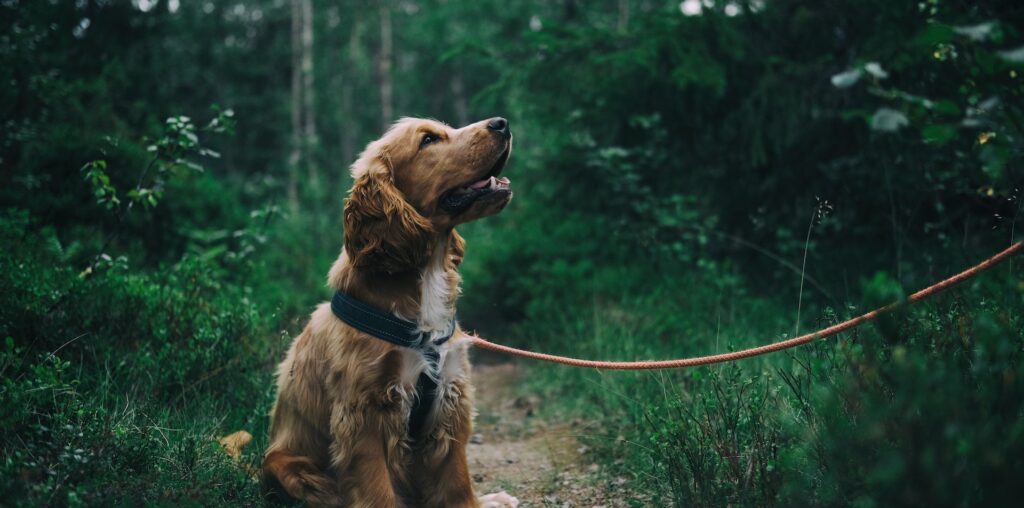As a dog owner, it’s always a good idea to be aware of potential dangers that may be lurking in your own backyard. While many common plants are totally fine for our furry friends. Others can be toxic and cause serious problems if ingested. One such plant is the Buckthorn, a woody shrub or small tree that’s native to Europe, Asia, and North America. With its small, dark berries, the Buckthorn may look innocent enough. But are Buckthorn Berries poisonous to dogs? The short answer is yes. But you should understand why and how it is poisonous. And, that’s what we’re here to explore in this article.
Now, before we dive in, it’s important to note that the severity of Buckthorn poisoning can vary. Depending on the individual sensitivity of your dog. And, the number of berries consumed. With that said, Buckthorn Berries are generally considered toxic to dogs. And, can cause symptoms such as
- Gastrointestinal Issues
- Vomiting
- Diarrhea
- Depression
- Lethargy
- Abdominal Pain
- Kidney Failure
Yikes! So, as a responsible dog owner, it’s essential to be aware of the potential risks. And take steps to prevent your furry friend from ingesting these berries.
In this article, we’ll go over everything you need to know about Buckthorn Berries. And, their potential dangers for dogs. We’ll discuss the appearance and habitat of the Buckthorn plant. As well as the symptoms of poisoning and how to prevent it. By the end of this article, you’ll have a good understanding of the risks involved. And, will be able to take the necessary precautions to keep your dog safe. So, without further ado, let’s get started!
What is Buckthorn and Where Can You Find It?

Alright, let’s talk about the Buckthorn plant. First things first. What is it? Well, the Buckthorn is a woody shrub or small tree. That’s native to Europe and Asia but also found in North America. It’s known for its small, dark berries and long, thin thorns. The leaves of the plant are typically oval in shape and have a glossy appearance.
And, Buckthorn Berries are small fruits. Round or egg-shaped. Buckthorn Berries are green when they are not ripe. And, turns dark red or dark purple when ripe. But sometimes it can turn yellow to dark orange too.
Besides, Buckthorn Berries have a nickname. It’s called the king of berries. And, though birds love to eat Buckthorn Berries. Still, it is not a safe food for other animals.
Now, you might be wondering exactly where you can find it around you. Unfortunately, it can grow in a variety of habitats. Including wooded areas, hedgerows, and wetlands. As it’s a common invasive species in many parts of the world. So, it’s not uncommon to see it growing wild in areas where it’s not native. In the United States, it’s commonly found in the eastern and Midwest states. As well as the Pacific Northwest. In Europe, it’s widely distributed in both temperate and subarctic regions.
Moreover, it’s worth noting that there are actually two main varieties of Buckthorn.
- Common Buckthorn (Rhamnus cathartica)
- Glossy Buckthorn (Frangula alnus).
The common Buckthorn is the more widespread of the two and is typically found in wooded areas. While the glossy Buckthorn is more commonly found in wetlands. Both varieties are invasive species. So it’s important to be aware of them if you’re spending time in areas where they might be growing.
Are Buckthorn Berries Poisonous to Dogs?

The short answer is: it depends. Because there are a few factors that can affect the toxicity of Buckthorn Berries. One of these factors is ripeness. Unripe berries tend to be more toxic than ripe ones. The quantity consumed is also important. The more berries your dog eats, the greater the risk of poisoning. Additionally, some dogs may be more sensitive to the toxins of these berries than others. And, may experience more severe symptoms as a result. With that said, Buckthorn Berries are generally considered toxic to dogs.
So, it’s important to be aware of the potential symptoms and the severity of the poisoning. Here are some common symptoms of Buckthorn poisoning in dogs:
- Vomiting: One of the most common symptoms of Buckthorn poisoning is vomiting. If your dog has ingested a significant quantity of berries. Then, they may vomit shortly after consuming them.
- Diarrhea: Along with vomiting, diarrhea is another common symptom of Buckthorn poisoning. Your dog’s stools may get watery and contain bits of undigested food.
- Lethargy: If your dog has eaten Buckthorn Berries. Then, they may become lethargic and have a reduced energy level. They may also seem less interested in their usual activities. And, be less alert than normal.
- Abdominal pain: Depending on the number of berries consumed. Your dog may experience abdominal pain as a result of the poisoning. This can manifest as excessive panting, restlessness, or reluctance to move.
In terms of severity, Buckthorn poisoning can range from mild to severe. A mild case of poisoning may result in only mild symptoms. Such as vomiting and diarrhea. While a severe case can lead to more serious symptoms. Such as tremors, seizures, and even death.
How to Prevent Buckthorn Poisoning in Dogs?

It’s always a good idea to take precautions to prevent your dog from ingesting these berries. So, what can you do to prevent Buckthorn poisoning in your furry friend? Here are a few tips:
- Fence off areas where the plant grows: If you have a Buckthorn plant in your yard. Then, it’s a good idea to fence it off to keep your dog away from the berries. This is especially important if you have a curious dog who tends to nibble on plants. We found No Dig All American Fence to be a good fit for this.
- Plant alternatives: Instead of planting potentially toxic Buckthorn plants. Consider choosing a shrub with non-toxic berries. This way, you can still provide your dog with a tasty snack while keeping them safe.
- Train your dog to avoid certain plants: If your dog is prone to nibbling on plants. Then, it’s a good idea to train them to avoid certain plants. You can do it through positive reinforcement training. Where you reward your dog for leaving the plant alone. And, redirect their attention to a safer activity. We recommend that you use Milk-Bone MaroSnacks Dog Treats as positive reinforcement.
- Keep an eye on your dog while they’re outside: It’s always a good idea to keep an eye on your dog while it’s outside. Especially if you have plants that may be toxic to them. And, if you see your dog snacking on a potentially dangerous plant. Then, intervene immediately and redirect their attention to a safer activity.
In addition to these prevention tips. It’s also important to know what to do if you suspect your dog has eaten Buckthorn Berries.
What to Do If You Suspect Your Dog has Eaten Buckthorn Berries?

If you suspect that your dog has ingested these toxic berries, it’s important to act fast. First of all, give your veterinarian a call and explain the situation. They will likely ask you a few questions about your dog’s size, age, and overall health. As well as how much of the plant your dog may have ingested and when. Based on this information, your veterinarian will advise you on the best course of action.
In some cases, your veterinarian may recommend inducing vomiting. To help remove the toxins from your dog’s system. You can do this by using hydrogen peroxide, which is usually administered orally. However, it’s important to note that inducing vomiting is not always appropriate. And, your veterinarian will determine whether or not it is safe to do so. Based on your dog’s specific situation.
Another option your veterinarian may consider is administering activated charcoal. Which can help absorb toxins in the stomach and intestines. This is usually given orally as well, either mixed with water or in a capsule form.
In addition to these treatments, your veterinarian may also recommend providing supportive care to your dog. Such as electrolyte solutions to prevent dehydration. Or, medications to control nausea and vomiting. It’s important to follow your veterinarian’s instructions carefully. And, provide any necessary care to your dog as advised.
Final Thoughts
To wrap things up, Buckthorn Berries can be poisonous to dogs. And it’s important for dog owners to be aware of this potential danger. If your dog eats Buckthorn Berries, you may notice symptoms. Such as vomiting, diarrhea, lethargy, and abdominal pain. These symptoms can range from mild to severe. Depending on the number of berries consumed. And, the individual sensitivity of your dog.
So, if you suspect your dog has eaten Buckthorn Berries. Then, it’s crucial to seek medical attention immediately. Your veterinarian may recommend inducing vomiting (using hydrogen peroxide). Or, administering activated charcoal. Or, providing supportive care (such as electrolyte solution to prevent dehydration).
In conclusion, the answer of “Are Buckthorn Berries poisonous to dogs?”. Yes! indeed. And it’s up to you to take precautions to keep our furry friends safe. This includes keeping an eye on them while they’re outside. Fencing off areas with dangerous plants, and training them to avoid certain plants. If you suspect your dog has ingested something toxic. Then, don’t hesitate to seek medical attention. With a little awareness and prevention, we can keep our dogs healthy and happy.

